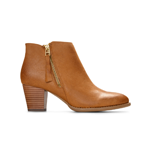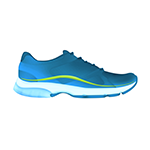
Physiological Benefits of Walking
By Brian Hoke
As a health care practitioner who regularly works toward maintaining optimal foot health, I see hundreds of individuals every year that have a mismatch between their “Chronological Foot Age” in calendar years and their “Physiological Foot Age”.
The Chronological Foot Age is simply how many birthdays you have celebrated. Like other aspects of health, looking at a cross section of individuals who are the same age will reveal a wide variety with regard to how the body has handled these years. A useful analogy is attending a ten year high school class reunion. As you look around the room you will see people who seem to have been frozen in time and have changed little since the day they graduated. At the other end of the spectrum are those who require a second take to realize who they are because of changes in their health and appearance.
What Is My Foot Health?
The “Physiological Foot Age” refers to foot health with regard to how well the foot is maintaining its alignment, structure, strength, and flexibility. A “physiologically young” foot has good structural alignment, good blood flow, and mobile joints with well-maintained joint surfaces that are supported by strong muscles. A “prematurely older” foot is characterized by loss of alignment and development of structural problems such as flatter arches, bunions and hammertoes. The muscles are weaker and less efficient and the ligaments that support the structure are overstretched due to stresses of supporting the body’s weight.
What Determines Your Foot Health?
There are multiple factors that contribute to maintaining foot health and a young “Physiological Foot Age”. These can be separated into non-modifiable and modifiable factors. The non-modifiable factors are those that we do not have control over, and perhaps the most significant is genetics. Like other components of health, foot structure follows family trends, but even within families there is typically considerable variation.
Beyond the inherent foot characteristics from our parents’ genetics, there are modifiable factors that we have control over to keep our feet physiologically younger. The greatest impact comes from purposeful sustained exercise. This can be a structured program under the watchful guidance of a knowledgeable fitness instructor or it may be as simple as a daily program to get the benefits of walking.
Ways To Improve My Foot Health
Participation in a regular exercise strategy has consistently shown it will help maintain overall health, reduce depression, and lower weight and BMI (Body Mass Index). With each step, the impact force is not simply our body weight; it is actually a multiple of that number. In walking, the vertical ground reaction force is about 1 ½ times our weight, and when we run it increases to 3-5 times our body weight (even more running down hill). This means if we lose 6 pounds, it’s actually like losing 9 pounds on our joints when we are walking, and it’s like losing 18-30 pounds if we are a runner. This highlights the physiological benefits of walking and running.
When we opt for weight bearing exercises to improve or maintain our “Physiological Foot Age” it is critical to provide structural support through well designed footwear. Many people also benefit from an anatomically designed insole or custom foot orthotic to prevent the foot from moving outside the optimal path of movement.
Do What You Can To Maintain Your Foot Health
There are many components to keeping our feet “physiologically young”. Take control over those factors that are within your control. Participate in a regular component of exercise and include some exercises for strengthening the many muscles within the foot. Equip yourself with footwear that supports the natural shape of your foot and includes cushioning, especially when you are standing or walking on man-made surfaces. There are physiological benefits of walking and it can even help with your mental health. If you have pain or are noticing signs of “premature foot aging”, seek a consultation with a health care practitioner who is well versed with foot biomechanics and conditions.
About the Author:
Specializing in orthopedic and sports physical therapy, Brian Hoke, DPT, SCS has a particular interest in the biomechanical factors influencing lower limb rehabilitation. He is owner of Atlantic Physical Therapy, a private practice in Virginia Beach, VA.
Brian is a board certified Clinical Specialist in Sports Physical Therapy, a distinction achieved by fewer than 600 physical therapists in the U.S. He works with athletes of all levels—from recreational runners to elite professional and Olympic athletes. He has contributed chapters to two textbooks on the treatment of running injuries.
Brian is an avid educator, lecturing extensively in the U.S. and internationally. Since 1985, he has been a faculty member of the popular continuing medical education seminar, “When the Feet Hit the Ground, Everything Changes.” He co-developed and has taught the “Take the Next Step” course since 1990. In addition, he has been an adjunct faculty member of physical therapy programs at Old Dominion University and Touro College on Long Island, NY.
Brian’s expertise in sports physical therapy is a particular asset to Vionic’s athletic line of footwear. He and Phillip Vasyli have also collaborated to create a foot orthotic designed for problems with supination—when feet roll outward too much.









